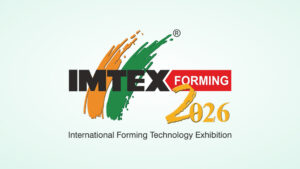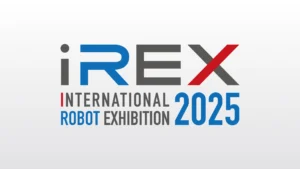table of contents
- Heading 1
- Heading 1
- Heading 1
share this
Precision and efficiency have taken on a crucial role in the industrial industry’s constantly changing environment. Part deviation is one of the major issues that welding operations must deal with because it can lower product quality and drive up production costs. The development of welding robots has proven to be a game-changer in the fight against this problem. These cutting-edge robotic systems provide welding duties with unmatched accuracy and consistency, guaranteeing that part deviations are reduced, if not entirely eliminated. In this article, we examine the function of welding robots in reducing component variation and examine the difficulties they face, the methods they use, and the no-coding solutions.
Understanding Part Deviation in Welding
Part deviation describes the discrepancy between a welded component’s actual dimensions or placement and its intended design. Numerous things, such as inconsistent materials, sloppy assembly, thermal deformation, and even human mistake, might cause this behavior. Part deviation has far-reaching effects, including decreased structural integrity, impaired aesthetics, and challenges during later assembly procedures.
Challenges Posed by Part Deviation
When welding, part deviation poses a number of difficult problems that can affect the final product’s quality, the effectiveness of production, and the cost of manufacturing as a whole. These difficulties result from the fundamental nature of manufacturing procedures, the complexity of welding, and the possibility of mistakes or discrepancies at different production stages. Here, we go into the specifics of part deviation’s challenges and how they affect the manufacturing sector.
1. Structural Integrity and Safety Concerns
Compromise in structural integrity is one of the biggest problems caused by part deviation. The total strength and load-bearing capability of the finished product can be decreased by weak spots in the structure caused by welds that are not in line with the original design. Any reduction in structural integrity caused by part deviation can have major repercussions in sectors like construction, aerospace, and automotive where safety and dependability are top priorities.
2. Assembly and Fit Issues
Part deviation might make it challenging to precisely assemble components. When assembled, welded parts may not fit together perfectly if their dimensions differ from those specified in the design. This may result in manufacturing line bottlenecks, longer assembly delays, or even the requirement for manual alterations or revisions to guarantee a good fit.
3. Aesthetic Concerns
Even tiny part deviations can cause products to appear inconsistent or unattractive in markets where aesthetics matter a lot, such as consumer electronics and luxury goods. As a result, brand value, consumer satisfaction, and market competitiveness may all suffer.
4. Rework and Wastage
Rework is frequently necessary to address part deviation, which not only eats up important time but also raises manufacturing costs. Material wastage can happen in traditional manufacturing settings where manual changes are performed to remedy deviations due to trial and error methods. This waste results in increased material costs and a less environmentally friendly manufacturing process.
5. Quality Control and Inspection Complexity
Part deviation increases the complexity of quality control and inspection procedures. To make sure that each welded component complies with design requirements, manufacturers might have to spend more money on examining and validating each one. The likelihood of problems evading inspection can rise as a result of production being slowed down.
Role of Welding Robots in Addressing Part Deviation
Robotic welding has become a game-changing technology that is essential in reducing the detrimental effects of part deviation. They are ideally equipped to address the challenges of producing accurate and consistent welds despite the existence of part deviations due to their sophisticated capabilities and characteristics. Here is a more thorough explanation of what they do:
Real-time Sensing and Detection: Robots that can weld are fitted with a range of sensors, cameras, and cutting-edge vision systems. These technologies allow them to obtain information about the components being welded while also live-monitoring the welding process. The robots are constantly monitoring this data in order to identify even little deviations from the original design.
Adaptive Welding Paths: The ability of welding robots to adapt to shifting conditions is one of its primary functions. Welding robots have the ability to dynamically modify their welding courses and trajectories to account for part deviations. Because of this flexibility, even if the components are not exactly aligned or have tiny deviations, the welds are put correctly.
Feedback and Iterative Learning: During the welding process, welding robots create feedback loops. They do a comparison between the welds’ actual results and the desired requirements. The robots can modify their parameters, such as welding speed and angle, if inconsistencies are found.
How Augmentus can benefit in Welding Robots and Part Deviation

The utilization of machine vision in the Augmentus is revolutionizing welding and part deviation processes. This level of accuracy empowers robots with an unparalleled level of intelligence and adaptability, ensuring flawless execution even in intricate tasks. By seamlessly integrating machine vision into the welding and part deviation workflow, Augmentus is paving the way for enhanced efficiency and quality, marking a transformative shift in the landscape of industrial robotics.
Conclusion
Part deviation is a problem that manufacturers face on a regular basis, and it can lower product quality and drive up production costs. With its state-of-the-art sensors and algorithms, welding robots have become a game-changing option for addressing part variations in real-time. Welding robots are opening the way for more effective, accurate, and dependable industrial processes because of their capacity to monitor, detect, and correct for misalignments. Platforms like Augmentus expand on these robots’ capabilities, making their integration more feasible and effective than ever before.




